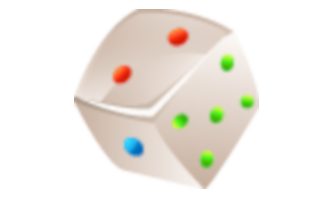Earth - Inside and Out
Science, Grade 4
Earth - Inside and Out
Study Guide

Earth - Inside and Out
Flash Cards

Earth - Inside and Out
Quiz

Earth - Inside and Out
Worksheets

Earth - Inside and Out
Games

Study Guide Earth - Inside and Out Science, Grade 4
❮
1
/
4
❯
EARTH: INSIDE AND OUT Earth from the Inside Let’s look at the Earth from the inside out… The Earth is made up three main layers called the crust, mantle, and core. The innermost layer of the Earth is the Earth’s core. The Earth has an inner and outer core. The inner core is in the middle and is packed tightly so it is mostly solid. The outer core of the Earth is made up of very hot, dense (thick) liquid. The next layer is the mantle, which is made up of igneous and metamorphic rocks. The top layer is the Earth’s crust. We live on the Earth’s crust. Lesson Checkpoint: What are the three layers of the Earth? What is Soil? When we walk upon the Earth’s crust, we are walking on soil. Soil is the loose material the covers much of the Earth’s surface that is made up of several different layers: topsoil, subsoil, and bedrock. The three main particles found in soil are salt, silt, and clay. © Copyright NewPath Learning. All Rights Reserved. Permission is granted for the purchaser to print copies for non-commercial educational purposes only. Visit us at www.NewPathLearning.com.
All soil contains pieces of weathered rock, humus, air, and water. Soil is extremely important because soil supports all life on Earth. Lesson Checkpoint: What are three main particles found in soil? Earth’s Surface The Earth’s surface changes constantly because of wind, water, temperature changes, and living things. Earth’s surface has many shapes and features, known as landforms which include many different solid features naturally formed on top of the Earth’s crust, and bodies of water. Landforms change constantly due to weathering which is the process of rocks breaking into smaller pieces. © Copyright NewPath Learning. All Rights Reserved. Permission is granted for the purchaser to print copies for non-commercial educational purposes only. Visit us at www.NewPathLearning.com.
Did you know there are two types of weathering? The two types of weathering are physical and chemical. Physical weathering only changes the SIZE of the rock. When water runs over rocks, the particles flowing in the water rub against each other breaking down rocks, causing the rocks to become smaller. This is an example of physical weathering. Ice can cause physical weathering too. When water seeps into cracks in rocks and then freezes causing the rock to break apart because ice takes up more space than water. When water freezes, it expands taking up MORE space than water, causing the rock to break apart. Plants growing in a crack of a rock cause physical weathering too. When the plant’s roots grow larger, they can cause the surrounding rock to break apart. The second type of weathering is called chemical weathering, which refers to chemicals causing rocks to change into different materials. Lesson Checkpoint: What is an example of physical weathering? Changes Happen Constantly The Earth’s surface changes constantly as a result of these processes: • Erosion is caused by water, wind, gravity, and glaciers. • Deposition is the laying down of pieces of Earth’s surface. • Landslides are rapid downhill movement of large amounts of rock and soil. Lesson Checkpoint: What causes erosion? © Copyright NewPath Learning. All Rights Reserved. Permission is granted for the purchaser to print copies for non-commercial educational purposes only. Visit us at www.NewPathLearning.com.
Rapid Changes Volcanoes cause rapid changes when they erupt on the Earth’s crust. An active volcano is a volcano that erupts often or show signs of future eruptions. Ash from active volcanoes can be spread around for many miles near the volcano and can kill trees and wildlife. Dormant volcanoes are volcanoes that have not erupted for a long time and do not show signs of erupting in the future. Earthquakes also cause rapid changes to the Earth’s surface. An earthquake is a sudden shift in the Earth’s crust that causes the ground to shake and vibrate violently. Earthquakes most often occur near faults. Faults are large breaks or cracks in the Earth’s crust. A seismic wave is a wave of energy that travels through the Earth, most often as the result of an earthquake. Lesson Checkpoint: What is a dormant volcano? © Copyright NewPath Learning. All Rights Reserved. Permission is granted for the purchaser to print copies for non-commercial educational purposes only. Visit us at www.NewPathLearning.com.
